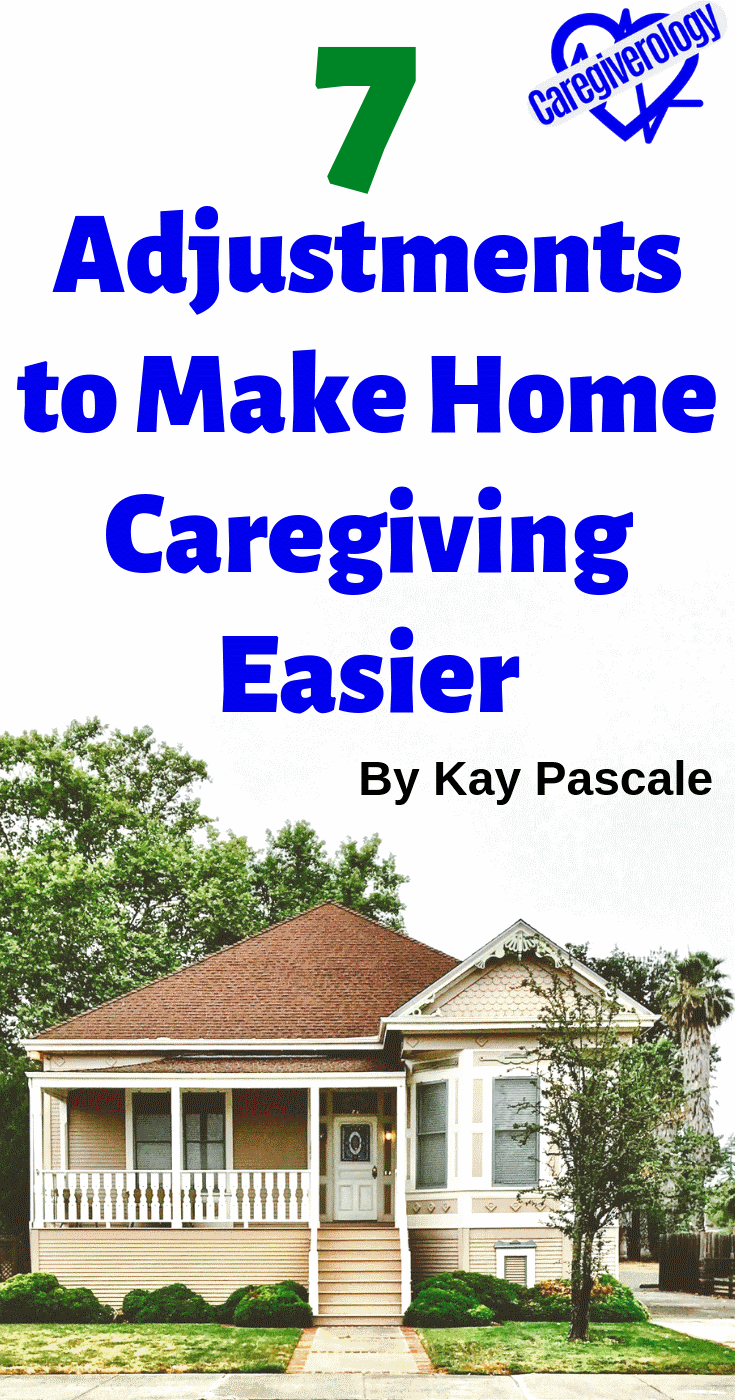7 Adjustments to Make Home Caregiving Easier
Home care is a trying transition for everyone involved. While this is a stage that can be beneficial for you and your loved ones, the change can be a little stressful. If you’re about to embark on a new journey with at-home care, take a look at these seven simple adjustments you can make to make home caregiving easier.
Needs Plan Clutter Bathroom No-step Pocket doors First floor
1. Take Note of Everyone’s Specific Needs
Between hiring an at-home caregiver to moving your loved one into your own home, there will be specific housing needs for all residents and visitors. Take note of your loved one first. Do they require specialized care? Do they need a specialist to come by on a regular basis? Are there certain new diet restrictions? Does the home need to be made wheelchair accessible?
Once you have mapped out these needs, consider the other residents and visitors of the home. Will there be a hospice nurse coming in regularly to help? Will they need a separate space for paperwork? Consider your family—will they need a separate eating and living area? If you have kids, perhaps sitting down and talking to them about new boundaries will be helpful. Keep the needs of everyone in mind when making these adjustments.
2. Create a Plan
Having something as simple as a sheet that maps out the changes that need to be made in your home can make a world of difference. Make sure you have taken inventory of everything that needs to be adjusted in your home. This will help you narrow down the essentials versus “nice to haves” when it comes to deciding what can and cannot be implemented.
Along with a plan that maps out your home adjustments, consider creating a daily and weekly schedule. Your day-to-day can get pretty hectic, so when it comes to taking care of your loved one, you want to make sure nothing is forgotten like vitamins, medications, or doctor’s appointments. This will ensure your entire team is on track and that your days and weeks run smoothly.
3. Get Rid of the Clutter
No matter if it's your needs or the at-home environment, clutter makes your day-to-day that much more difficult. When making adjustments to your home, make sure you get rid of as many items as possible that aren’t a necessity. You don’t need to make your home bare, but consider extra items that could potentially be a hazard to moving around the home.
Go through everything you use on a regular basis and parse through items that haven’t been touched in the past year. If you haven’t used something in over a year, then you can rest easy getting rid of it without missing it later. If there are some items that are keepsakes that you do not want to get rid of, but would like to keep them out of the way, consider purchasing a storage unit to hold all the items you’d like to go back to at a later time.
4. Don’t Overlook the Bathroom
For aging loved ones, the bathroom can end up being one of the most dangerous parts of the home. Bending and lifting may be more difficult, so without a bar to help, the risk of falling and serious injury could be much more common. The shower can also prove to be quite the hazard when going in and out of a slippery surface.
According to House Method, there are plenty of ways you can make your bathroom more accessible for seniors. For example, you can install grab bars and anti-slip mats in the shower to prevent falls. Depending on the layout of your bathroom, you may want to invest in a special bath and shower installation that includes a doorway for easy entry and exit.
5. Create at Least One “No-Step” Entry to the Home
If your loved one requires a wheelchair or walker, think about no-step entrances. Getting up and down steps can prove to be difficult and may even be considered a hazard in certain areas of your entryway. You can find ramps that can be placed right over your existing steps, or you may want to consider cementing a certain entryway to get rid of the steps. Whether you create a ramp or use the backdoor that doesn’t have any steps, make sure there’s at least one part of the home that allows you to leave and enter without any steps.
6. Explore Pocket Doors
You’d be surprised by how a simple change, such as switching to pocket doors, can be. If your loved one requires a wheelchair, using pocket doors will help keep the door from swinging and hitting the wheelchair. Additionally, pocket doors simply hang along the wall, whether they’re open or closed. This will help keep the door out of the way when opened.
Pocket doors can be easily installed in place of your regular door and to make sure your home looks nice and aesthetically pleasing, you can request your installer to take off the paneling around the original door. It will look like your new pocket doors have been there the whole time.
7. Keep All Your Essentials On the First Floor
If you have a two-story home, you understand how difficult it is to constantly walk up and down the stairs to grab something you need. This can prove to be extremely difficult when helping loved ones in need of care. When you make adjustments to your home, consider having all of the essentials that you may need throughout the day on a single floor. These essentials could include vitamins or supplements, items like books and crosswords to occupy time, and enough snacks and water to nourish both you and your loved one.
Consider what you do on a daily basis and work around your schedule. Ideally, everything will be on the first floor, but if you find yourself and your loved one on the second floor more often, then consider having all important items on the second floor. In cases like this, you may also want to consider adding an elevator of some sort or an electric stair lift to get around the house more efficiently.
Thank you Kay Pascale for contributing this article.
Guest Articles Written for Caregiverology
From 7 Adjustments to Make Home Caregiving Easier to Caregiverology Home
Recent Articles
-
Common Truck Crash Injuries and Legal Remedies - Caregiverology
Jul 19, 25 10:49 AM
Known for its sun-drenched beaches, vibrant arts scene, and bustling maritime industry, Fort Lauderdale is a city that sees heavy traffic both on its roads and at its busy port. Unfortunately, with th… -
Why Expert Legal Help Matters After Serious Injury - Caregiverology
Jul 19, 25 10:35 AM
In Houston, over 67,600 car crashes occurred in 2023, resulting in 290 fatalities and 1,612 serious injuries. That’s roughly 185 accidents every day. -
How Life Care Planners Support Injury Recovery - Caregiverology
Jul 19, 25 10:18 AM
In Los Angeles, life care planners play a vital role in supporting injury recovery, especially for individuals facing catastrophic injuries such as traumatic brain injuries or spinal cord damage.





New! Comments
Have something to say about what you just read? Leave a comment in the box below.